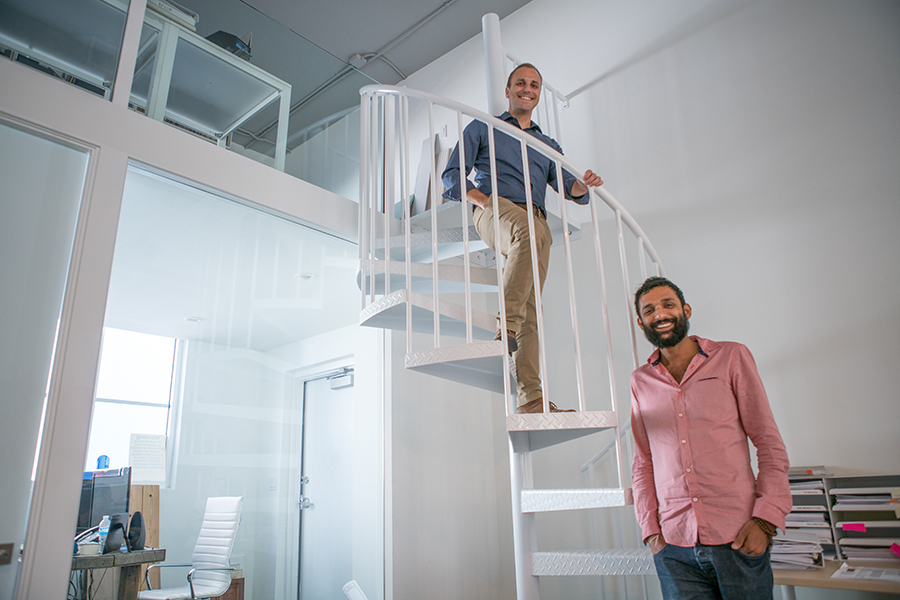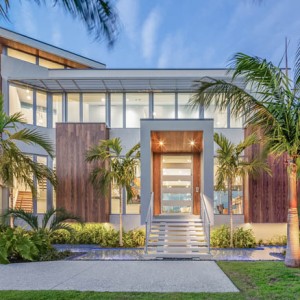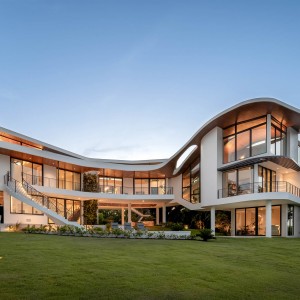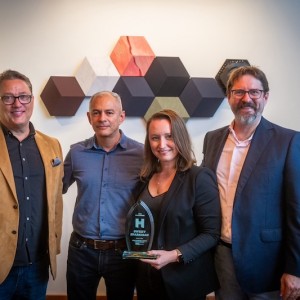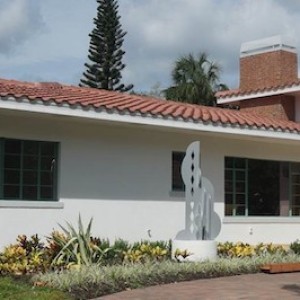Punit Patel and Chris Leader met over ten years ago while working under the umbrella of architect Jonathan Parks. Upon deciding to branch out into their own respective firms—Patel as Sawa Design Studio and Leader as Leader Design Studio—they found clarity in combining their kindred visions to create inspired and customized homes that live in conversation with their surrounding neighborhood.
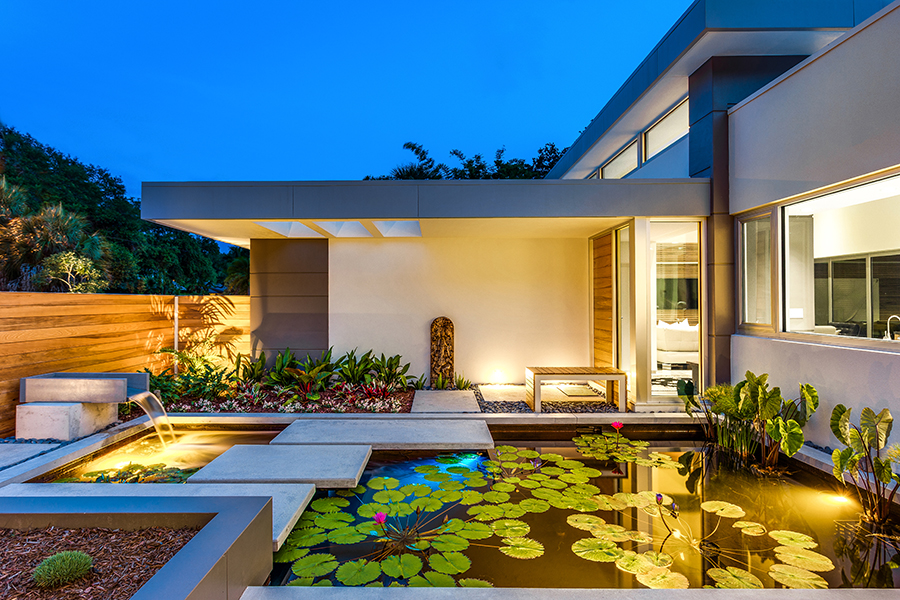
THE LOTUS HOUSE.
SRQ: What are your respective design philosophies and how do you fuse them? Leader: A huge part of the way that I approach design is by crafting projects that are specific to the site, specific to the environment that they are in and specific to what the clients are looking for. Our projects are unique because they are very client-driven—we try to hit the style that the client wants, make it work for their lifestyle and do it in a responsible, contextual way for the neighborhood. The Lotus House on Orange Avenue is a good example of how we approach a project: we wanted to create a house that was appropriate for that neighborhood—even though it is contemporary, I don’t think it is off-putting. It was an improvement for the neighborhood; it’s a zero-energy house so it’s basically neutral, it’s a responsible house and environmentally and neighborhood-friendly, and it’s totally a house for the owners. Patel: For me, it’s all about the experience when the clients wake up in the morning—what are they seeing, what is the feeling they get when they go to the faucets, what are they feeling from that first touch? From an interior standpoint, what separates me from other designers is that I’m not trying to make my money on products; I’m trying to push the design. Design is what is going to separate us from everyone else. We make design important over products, and I get to create something amazing with the resources we have.
Is there a project that embodies the best parts of what you do together? Leader: We have one under construction now on Bahia Vista, which is the next evolution, it kind of builds on the essence of the Orange Avenue house. We had more opportunity to push the limits on the interior with this one, and Punit can stretch his legs. Patel: Even in terms of material, or how we think about design, for this house we are playing more with the typical Florida materials—more natural stone, for example—and getting the starkness out of modern architecture to bring that warmth back in. We’re using familiar materials but in different ways. Leader: Ideal clients for us are the ones that let the process be natural. We push harder on those projects to make them spectacular because we have a client that is happy and engaged and is collaborating with us.
Your office is in the middle of the Rosemary District. How do you both feel about the development currently taking place in the neighborhood? Leader: It’s good to see it happening, but I’m not enamored by the way that it is happening. There’s a lack of long-term planning. The architecture that is coming out of the redevelopment the Rosemary District—it could be better. I would like to see the city take more leadership in putting together a long-term plan for the district. They have provided this density bonus to incentivize development, but they haven’t mandated that people put commercial on the ground as far as buildings go—there’s going to be a thousand apartments but no shops on the street-front. That is going to be a huge misstep long-term. I hope the second wave has better vision—it would be great to see the city step up. I heard talk of giving people a sixth floor, for example, if they used the ground floor for commercial, providing incentives or even making it a requirement. Patel: I think it’s a missed opportunity. I wish the high-rises had a little more design to them. Leader: Whether people agree with the choices or not, there are some groups that are trying to bring in some design to the high-rises—look at the Vue, Risdon, Aqua and the Jewel. I think people are more unhappy about the scale. Hopefully, the Rosemary will see more of those four- and five-story buildings.





